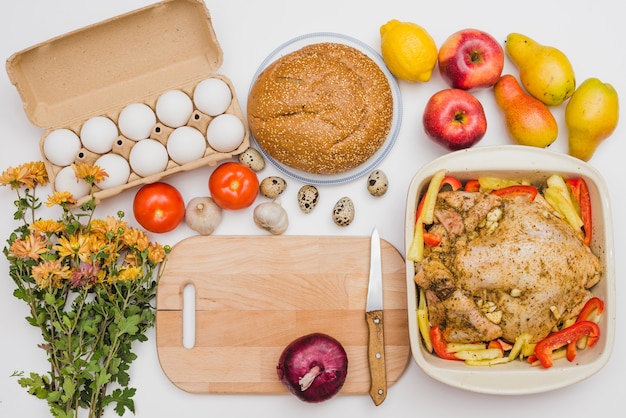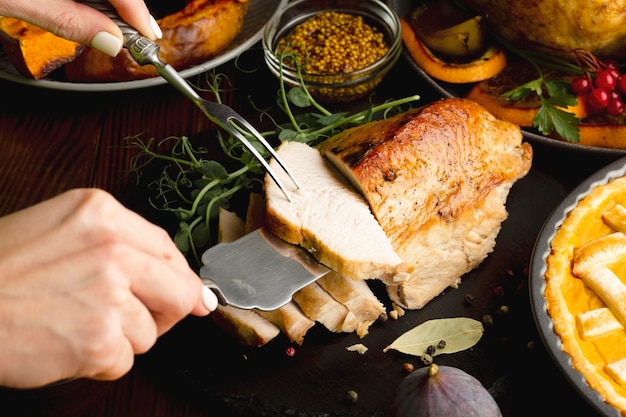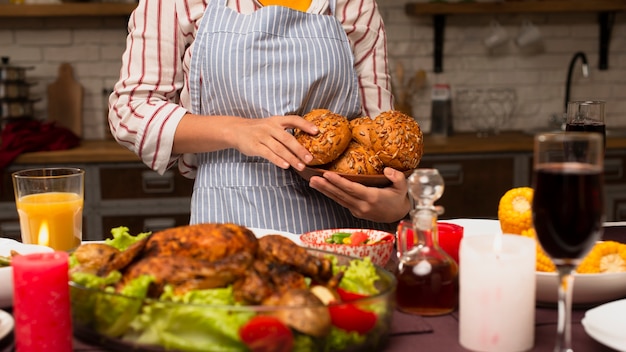Part 1: Unveiling the Secrets of High-Heat Chicken Cooking

Why 450 Degrees? The Science Behind the Sizzle
Let's break down the science behind this high-heat approach. Cooking chicken at 450 degrees isn't just about speed; it's about leveraging the power of intense heat to create a remarkable culinary experience. Here's why it works:
- Speed Demon: The high temperature allows heat to penetrate the chicken rapidly, meaning less time spent in the kitchen and more time enjoying your delicious creation. Think of it as a turbocharged approach to cooking.
- Crispy Skin, Anyone? That golden-brown, irresistible crunch we crave? It's all thanks to the Maillard reaction – a chemical process that happens at high temperatures, resulting in browning and flavour development. It's the magic that transforms a plain chicken skin into a culinary masterpiece.
- Juicy on the Inside: Now, you might think that such intense heat would dry out the chicken. But, believe it or not, it can actually help retain moisture. The rapid heat sears the surface, essentially locking in those precious juices. This creates a beautiful balance of crispy skin and tender, succulent meat.
Preheating: A Key to Success
Remember how your mum always nagged about preheating the oven? Well, she was right! Preheating ensures the oven reaches the desired temperature before you introduce the chicken. This is crucial for even cooking and prevents the chicken from sitting in a cold oven, which can lead to uneven cooking and a less than ideal result. Think of it as setting the stage for a flawless performance.
Part 2: Gathering Your Tools

Before we get our hands dirty, let's ensure we have the right tools for the job:
- Oven-safe Baking Dish: This should be large enough to comfortably hold your chicken pieces, allowing for even heat distribution. Think of it as the perfect stage for your culinary masterpiece.
- meat thermometer: The Hero of Chicken Cooking A meat thermometer is a game-changer for ensuring the chicken is cooked through to a safe internal temperature of 165 degrees Fahrenheit. It's the ultimate judge of whether your chicken is safe and delicious.
- Sharp Knife: The Key to Precision A sharp knife is essential for preparing the chicken, whether you're cutting it into pieces or simply removing the skin. A sharp knife makes for clean, precise cuts, ensuring that every piece is perfectly prepped.
- Basting Brush: This handy tool is perfect for applying oil or marinade to the chicken, helping achieve that crispy skin we talked about. Think of it as your brush for culinary brilliance.
- Tongs: Your Safe and Secure Handling Partners Tongs are indispensable for safely maneuvering the hot chicken in and out of the oven. They provide a secure grip, preventing any accidental spills or burns.
Part 3: Choosing and Preparing Your Chicken

Selecting the perfect chicken
Now, let's talk about the star of the show – the chicken itself! The best chicken for high-heat cooking is typically:
- whole chicken: A whole chicken, especially a free-range or organic variety, delivers a wonderfully flavourful result. The skin acts as a protective barrier, retaining moisture and creating a tender, juicy bird. It's a classic choice for a reason.
- Chicken Pieces: chicken thighs, legs, and drumsticks are fantastic options due to their higher fat content, which helps keep them moist and flavourful. These cuts are perfect for achieving that crispy, juicy texture. chicken breasts, on the other hand, require a bit more attention to prevent them from drying out.
Prep Work: Getting Ready to Cook
Let's get our chicken ready for its oven adventure. Pat it dry thoroughly with paper towels to remove excess moisture. Next, apply a thin layer of oil or marinade to the chicken, ensuring it's evenly coated. This helps create that coveted crispy skin and adds flavour from the inside out.
If you're working with a whole chicken, you can stuff the cavity with aromatic ingredients like fresh herbs, citrus fruits, or onions to infuse the bird with delicious flavour. Let your creativity run wild!
Part 4: The Cooking Process: From Oven to Table
roasting a whole chicken: A Step-by-Step Guide
Preheat your oven to 450 degrees Fahrenheit. Place the seasoned whole chicken in a roasting pan, breast side up. Roast for 15 minutes at this high temperature. Then, reduce the oven temperature to 350 degrees fahrenheit and continue roasting for an additional 45-60 minutes, or until the chicken reaches an internal temperature of 165 degrees Fahrenheit.
For even cooking, you can baste the chicken with the drippings from the roasting pan every 15 minutes. This helps to keep the skin moist and crispy, resulting in a truly delicious bird.
Tip: My grandmother, a culinary genius, taught me a little trick: add a cup of water to the roasting pan. This creates steam, helping to keep the chicken moist and preventing the skin from drying out. It's a simple trick with big results.
Cooking Chicken Pieces: Achieving Perfection
For individual chicken pieces, preheat the oven to 450 degrees Fahrenheit. Arrange the chicken pieces on a baking sheet, ensuring they're not overcrowded. Roast for 15-20 minutes, or until the chicken is cooked through to an internal temperature of 165 degrees Fahrenheit.
Tip: When cooking chicken breasts, keep a close eye on them to prevent overcooking. They can dry out quickly, so it's best to check the internal temperature with a meat thermometer.
Part 5: Elevating Your Chicken with Finishing Touches
Your chicken is cooked! Now, let's take it to the next level with a few finishing touches.
Resting the Chicken: The Secret to Juicy Meat
Let the chicken rest for 10-15 minutes before carving. This allows the juices to redistribute throughout the meat, ensuring it remains tender and juicy. It's a simple step that makes a big difference in the final result.
Serving and Garnishing: Presentation Matters
Serve your perfectly roasted chicken with your favourite sides. I love a classic combination of roasted vegetables, mashed potatoes, and gravy. But, feel free to experiment and find your perfect pairing!
Add a touch of culinary flair by garnishing the chicken with fresh herbs, lemon slices, or a sprinkle of chopped nuts. These simple additions add visual appeal and enhance the overall flavour experience.
Part 6: Variations and Flavour Explorations
Cooking chicken at 450 degrees is incredibly versatile. Don't be afraid to experiment with different flavour profiles and variations to keep your culinary journey exciting.
Marinades: A Symphony of Flavour
Marinating the chicken before cooking adds depth of flavour and tenderness. Experiment with different marinades based on your preferences. Here are a few ideas to get you started:
- Citrus Marinade: Combine lemon juice, orange juice, olive oil, garlic, and herbs for a bright and tangy marinade. It's a perfect choice for lighter chicken dishes.
- Honey Garlic Marinade: A sweet and savoury marinade perfect for chicken thighs and drumsticks, offering a balanced flavour profile.
- Spicy Marinade: Combine chili powder, cumin, paprika, and other spices for a fiery kick. This is a great option for those who like a little heat.
Stuffing the Chicken: Adding Depth and Texture
Stuffing a whole chicken with a flavourful filling can elevate its taste and create a truly impressive meal. Here are some stuffing ideas to inspire your culinary creativity:
- Herbed Stuffing: Combine bread crumbs, herbs, onions, and vegetables for a classic stuffing that's both flavorful and comforting.
- Lemon and Herb Stuffing: Add a citrusy twist with lemon zest, herbs, and garlic. This stuffing provides a light and refreshing flavour.
- Sausage Stuffing: Combine sausage, bread crumbs, and herbs for a savoury and flavourful stuffing. It's a hearty and satisfying option.
Part 7: Addressing Your FAQs
Let's answer some common questions about high-heat chicken cooking:
1. Can I cook chicken at 450 degrees for longer than 15 minutes?
Absolutely! You can cook chicken at 450 degrees for longer than 15 minutes, but keep a close eye on it to prevent overcooking. Use a meat thermometer to ensure the chicken reaches an internal temperature of 165 degrees Fahrenheit, your safety benchmark.
2. What if the chicken skin isn't crispy?
If the chicken skin isn't as crispy as you'd like, you can try broiling it for a few minutes at the end of cooking. Just be careful not to burn the skin. A little bit of patience and attention goes a long way!
3. Can I use a different temperature for chicken?
Yes, of course! You can cook chicken at lower temperatures, but it will take longer. Remember that the cooking time will vary depending on the size and thickness of the chicken pieces.
4. What happens if I overcook the chicken?
Overcooked chicken can become dry and tough. Use a meat thermometer to ensure the chicken is cooked through to an internal temperature of 165 degrees Fahrenheit, but don't overcook it. A little bit of extra time in the oven can ruin a perfectly good chicken.
5. Can I cook chicken at 450 degrees in a skillet?
You can cook chicken at 450 degrees in a skillet, but be careful not to overcrowd the skillet. You may need to cook the chicken in batches to ensure even browning and cooking. This is a great way to achieve that beautiful sear on the outside of the chicken.
Part 8: Final Thoughts: Embark on Your Chicken Journey
There you have it, my comprehensive guide to cooking chicken at 450 degrees. From choosing the right chicken to perfecting the finishing touches, this method offers a delicious and efficient way to prepare this culinary staple. So, the next time you're craving a crispy, juicy piece of chicken, remember this guide and get ready to impress your family and friends with your newfound culinary skills. Happy cooking!
Everyone is watching

Corn on the Cob: The Ultimate Guide to Perfectly Cooked Ears
Healthy MealsAh, corn on the cob. Just the name evokes images of sunny days, barbecues, and that sweet, juicy flavour that ...

Scallops: The Ultimate Guide to Perfect Cooking
Healthy MealsAh, scallops. Those delicate, sweet, and utterly delicious morsels of the sea. They hold a special place in my...

Spaghetti Squash: The Ultimate Guide to Cooking and Serving
Healthy MealsRemember that time you saw spaghetti squash at the supermarket, looking all bumpy and strange, and thought, "W...

Salmon Cooking Times: Perfect Guide for Every Recipe
Healthy MealsLet me tell you, cooking salmon is an art form. It's all about getting that perfect balance: juicy and tender,...

Ham Cooking Time: How Long to Bake, Smoke, or Boil a Delicious Ham
Healthy MealsAh, ham. It's a classic, isn't it? A real crowd-pleaser, especially around holidays. And when done right, it'...
